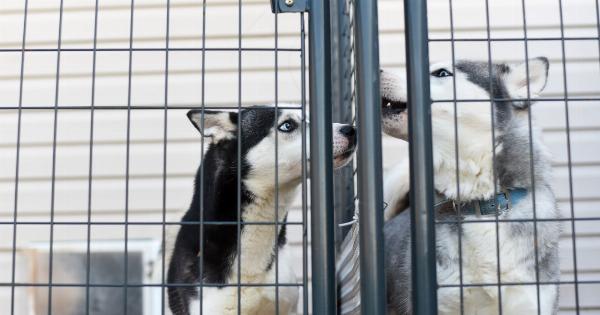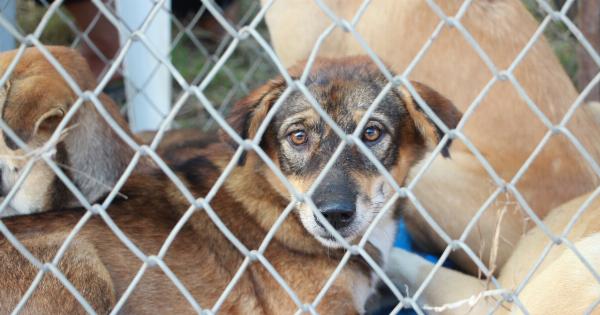Stray animals, also known as street animals or community animals, are domesticated animals that roam freely without a permanent home or caretaker. These animals face numerous struggles every day, including hunger, disease, abuse, and neglect.
The plight of stray animals is a global issue that requires immediate attention and effective solutions to alleviate their suffering and improve their well-being.
The Struggles Faced by Stray Animals
1. Lack of Food and Water.
Stray animals often struggle to find enough food and clean water to survive. They scavenge through trash cans and depend on scraps from restaurants or kind individuals.
However, this inconsistent and inadequate food supply leads to malnutrition and starvation, affecting their overall health and immune system.
2. Disease and Infections.
Stray animals are highly susceptible to diseases and infections due to their exposure to unhygienic environments and lack of veterinary care.
They can contract fatal diseases such as rabies, distemper, and parvovirus, which not only affect their well-being but also pose a risk to human health.
3. Abuse and Cruelty.
Street animals are often subjected to abuse, cruelty, and acts of violence by individuals who view them as nuisances or threats.
They may experience physical abuse, such as kicking or hitting, or face intentional poisoning or acts of cruelty that cause severe harm and suffering.
4. Overpopulation and Reproduction.
The lack of spaying and neutering programs for stray animals leads to overpopulation, exacerbating their plight. Stray animals reproduce rapidly, resulting in an increasing number of homeless animals on the streets.
Overpopulation puts a strain on limited resources, making it even more challenging to provide adequate care and support for these animals.
5. Lack of Shelter and Protection.
Stray animals face harsh weather conditions without any proper shelter or protection. They are exposed to extreme heat, cold, rain, and other natural elements, which can lead to illnesses, hypothermia, or dehydration.
Without a safe place to rest, they are constantly vulnerable to danger and neglect.
6. Traffic Accidents and Injuries.
Living on the streets exposes stray animals to the constant danger of traffic accidents. They may get hit by vehicles or suffer injuries due to reckless driving.
These accidents often result in severe physical injuries, leaving the animals in pain and distress without access to medical care or treatment.
Solutions to Address the Plight of Stray Animals
1. Sterilization and Spaying Programs.
Implementing widespread sterilization and spaying programs is crucial to control the stray animal population. These programs help prevent overpopulation, reduce the number of homeless animals, and improve their overall health.
By collaborating with local veterinary clinics and organizations, these procedures can be made affordable and accessible to all.
2. Education and Awareness Campaigns.
Creating awareness through educational campaigns can help people understand the needs and rights of stray animals.
Educating communities about responsible pet ownership, the importance of vaccinations, and the humane treatment of animals can lead to a change in attitudes and behaviors. This, in turn, can reduce the instances of abuse and neglect.
3. Improved Animal Welfare Laws.
Enacting and enforcing stringent animal welfare laws plays a crucial role in protecting stray animals. These laws should include provisions against cruelty, abandonment, and neglect.
Stricter punishment for offenders can serve as a deterrent and ensure the safety and well-being of street animals.
4. Establishment of Animal Shelters and Rehabilitation Centers.
Building and supporting animal shelters and rehabilitation centers provides a safe haven for stray animals. These facilities can provide food, medical care, and shelter for injured or unwell animals while working to find them suitable forever homes.
Collaborating with animal rescue organizations and volunteers can help increase the effectiveness and reach of such initiatives.
5. Collaborative Efforts between Communities and NGOs.
Creating partnerships between communities, government bodies, and non-governmental organizations (NGOs) is critical in addressing the plight of stray animals.
By working together, these stakeholders can share resources, knowledge, and expertise to develop and implement sustainable solutions. Local community involvement can also lead to increased support for initiatives and ensure their long-term success.
6. Adoption and Foster Programs.
Promoting adoption and fostering programs encourages people to provide permanent homes or temporary care to stray animals.
Animal shelters and NGOs can organize adoption drives, facilitate the adoption process, and provide support and guidance to new pet owners. Fostering programs can help provide shelter, care, and socialization opportunities for animals until suitable adoptive families are found.
Conclusion
The plight of stray animals is a pressing issue that requires comprehensive solutions and widespread awareness. By addressing the struggles faced by these animals and implementing effective measures, we can make a significant difference in their lives.
Through sterilization programs, education, improved laws, establishment of shelters, collaborative efforts, and adoption initiatives, we can create a more compassionate society that values and protects the well-being of stray animals.



























